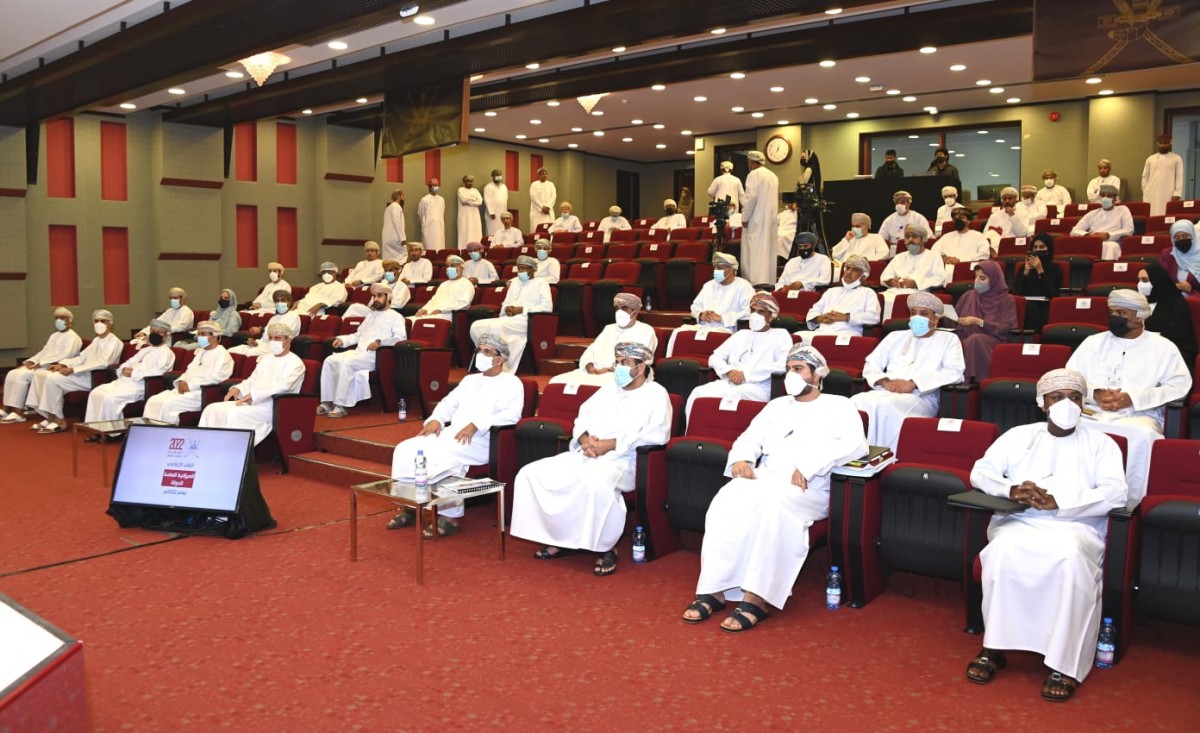Economy
Oman’s Public Revenues Projected To Grow By 6% In 2022; Expected To Hit RO10.58bn

Training the spotlight on Oman’s economy, the media meeting for the State’s General Budget held today [Sunday, December 12] showed positive signs that project an uptick in the Sultanate’s economy for the coming fiscal year.
Hosted at the Ministry of Finance, the media meeting aims to enhance transparency and encourage community engagement as multiple state bodies gather in attendance to review the financial, economic, commercial, and investment results that have been achieved for each year.
Speaking at the meeting today, His Excellency Sultan bin Salim bin Said Al Habsi, the Minister of Finance, said that the state’s total public revenues for the fiscal year 2022 AD were estimated at RO10.58 billion – which is an increase of six per cent over what has been collected by the end of 2021.
While the recovery signs can be attributed to a cut in public spending and a general trend in higher oil prices globally, the Government will also evaluate the performance of the Value-Added Tax (VAT), which came into effect on April 16, 2021.
Oman’s VAT is pinned at five per cent and is considered to be among the lowest tax levied around the world.
The Minister then elucidated that oil and gas revenues represented 68 per cent of total revenues in 2021, while non-oil revenues accounted for 32 per cent.
However, public spending for the 2022 fiscal year is estimated at about RO12.1bn, marking an increase of two per cent over what is expected to be spent by the end of this year.
This includes the cost of servicing the public debt amounting to RO1.3bn.
Meanwhile, the estimated deficit in the budget for 2022, based on the price of US$50 for a barrel of crude oil, will amount to about RO1.5bn, which represents 15 per cent of total revenues and 5 per cent of the GDP which, as per the Minister, is well within the limits of the deficit estimated in the medium-term financial plan.
The Minister then added: “The cost of repaying government loan installments next year is expected to reach about RO2.7bn. With regards to the level of public debt, it is expected to constitute 75 per cent of the GDP, which is less than what was expected to be around 86 per cent.”
Speaking at the meeting, His Excellency Abdullah bin Salem Al Harthy, the Undersecretary of Finance stated that the estimated expenditures of civil ministries in the 2022 budget stands at RO4 billion and 300 million, of which RO3 billion and 200 million are salaries for state employees.
Commenting on the Sultanate’s economy at large, Mr. Al Harthy said: “One of the most important pillars of the state’s general budget for 2022 is maintaining safe and sustainable levels of public spending, continuing to raise non-oil revenue contributions, and giving priority to the implementation of projects related to the productive sectors and others.”
Conducive factors should further aid Oman’s economy to grow on average by five per cent every year until 2040, said His Excellency Dr. Nasser bin Rashid Al-Maawali, the Undersecretary of the Ministry of Economy.
The average target growth for the national economy during the period from 2021-2040 is about 5 per cent (year-on-year), he foretells, before emphasising that the national economy is recovering and continuing its ‘correct growth’.
His Excellency then added that the expected growth rate of the Omani economy for the current year according to the International Monetary Fund is 2.5 per cent, which is the second-highest growth rate in the GCC.
-

 Real Estate2 months ago
Real Estate2 months agoAl Mouj Muscat Unveils Azura Beach Residences Phase 2: A New Chapter in Waterfront Living
-

 Leaders Speak1 month ago
Leaders Speak1 month agoDhofar International Development and Investment Company: Driving Sustainable Growth and Strategic Synergies in Oman’s Investment Landscape
-

 Economy1 month ago
Economy1 month agoMaal Card: What Oman’s New National Payment Card Means for Everyday Users
-

 Events1 month ago
Events1 month agoOER Corporate Excellence Awards 2025 Honours Entities and Innovations in Oman
-

 OER Magazines2 months ago
OER Magazines2 months agoOER, October 25
-

 Arts and Culture2 months ago
Arts and Culture2 months agoOminvest and Bait Al Zubair Launch “Future Frames” to Empower Youth through Art and AI
-

 Entertainment2 months ago
Entertainment2 months agoWhere Heritage Meets Haute Couture: Al Sadaa Haute Couture Transforms the Sultanate’s Fashion Scene
-

 News2 months ago
News2 months agoMs. Noor Saldin, Founder of Modern Generation International School, Wins Woman of the Year 2025; School Honored for Empowering Future Female Leaders






























